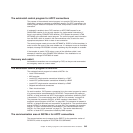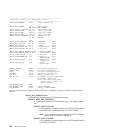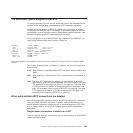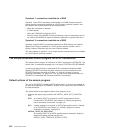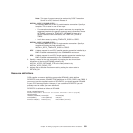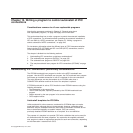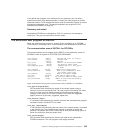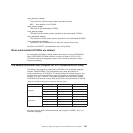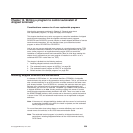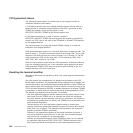
Chapter 13. Writing a program to control autoinstall of IPIC
connections
Considerations common to all user-replaceable programs
Note that the comments contained in Chapter 5, “General notes about
user-replaceable programs,” on page 435 apply to this information.
This section describes how to write a program to control the automatic installation
of IPIC connections. For information about controlling the automatic installation of
ISC over SNA (or APPC) connections, see Chapter 12, “Writing a program to
control autoinstall of APPC connections,” on page 543.
For introductory information about the different types of CICS intercommunication
links, including IPIC (IPCONN) and ISC over SNA (APPC) connections, see the
CICS Intercommunication Guide.
The chapter is divided into the following sections:
1. “Autoinstalling IPIC connections: preliminary considerations”
2. “The autoinstall user program at INSTALL” on page 555
3. “The autoinstall user program at DELETE” on page 556
4. “The sample autoinstall user program for IPIC connections (IPCONN)” on page
557.
Autoinstalling IPIC connections: preliminary considerations
The IPCONN autoinstall user program is similar to the APPC autoinstall user
program. Like the APPC autoinstall user program, the IPIC autoinstall user program
can choose an installed connection to use as a template for the new connection.
The main differences are that the template is an IPCONN rather than a
CONNECTION definition and that the use of the template is optional.
If IPCONN autoinstall is active, CICS installs the new IPCONN resource using the
following information:
v The information in the connect flow
v The IPCONN template, optionally selected by the IPCONN autoinstall user
program
v Values returned by the user program in its communications area
v CICS-supplied values
Autoinstall templates for IPCONNs
Unlike autoinstall for other resources, autoinstall for IPCONNs does not require
model definitions, although they are recommended. However, unlike the model
definitions used to autoinstall terminals, those used to autoinstall IPCONNs do not
have to be defined explicitly as models. Instead, CICS can use any
previously-installed IPCONN definition as a “template” for a new definition.
The purpose of a template is to provide CICS with a definition that can be used for
all connections with the same properties. You customize the supplied autoinstall
user program to select an appropriate template for each new connection, depending
on the information it receives from CICS.
© Copyright IBM Corp. 1977, 2011 553



